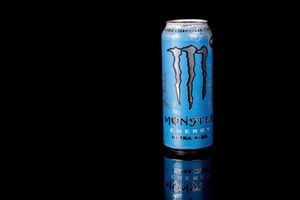
WeightWatchers' fourth quarter results were met with a negative market reaction, as the company reported a double-digit year-over-year decline in revenue despite surpassing Wall Street's top-line expectations. Management attributed the softer performance primarily to ongoing challenges in its behavioral business, lingering impacts from COVID-19 disruptions, and increased competition in the weight management industry. CEO Tara Comonte pointed to the shift toward digital health and the rapid adoption of GLP-1 weight loss medications as significant disruptors, noting, “The rapid adoption of GLP-1 weight loss medication is fundamentally reshaping the weight management landscape.” The company also faced continued headwinds from the closure of its consumer products business and a heavy reliance on paid marketing to drive subscriber growth.
Is now the time to buy WW? Find out in our full research report (it’s free).
WeightWatchers (WW) Q4 CY2024 Highlights:
- Revenue: $184.4 million vs analyst estimates of $173.2 million (10.5% year-on-year decline, 6.5% beat)
- Adjusted EPS: $0.32 vs analyst estimates of $0.07 (significant beat)
- Operating Margin: 8.7%, down from 9.8% in the same quarter last year
- Members: 3.3 million, up 200,000 year on year
- Market Capitalization: $24.74 million
While we enjoy listening to the management's commentary, our favorite part of earnings calls are the analyst questions. Those are unscripted and can often highlight topics that management teams would rather avoid or topics where the answer is complicated. Here is what has caught our attention.
Our Top 5 Analyst Questions WeightWatchers’s Q4 Earnings Call
-
Nathan Feather (Morgan Stanley) asked about the early impact of new product and marketing efforts on member growth and cost efficiency. CEO Tara Comonte and CFO Felicia DellaFortuna cited encouraging user engagement but emphasized that competitive marketing costs remain elevated.
-
Nathan Feather (Morgan Stanley) followed up on the role of generic GLP-1 medications in recent clinical subscriber growth. Chief Product Officer Donna Boyer explained access improvements drove better retention and NPS, while branded supply challenges persist.
-
Michael Lasser (UBS) questioned how WeightWatchers can avoid a cycle of declining subscribers and resources. Comonte stressed leveraging the company’s brand, innovation, and holistic care, but acknowledged ongoing financial and operational challenges.
-
Michael Lasser (UBS) also asked if the clinical subscriber growth rate was sustainable and about the cash flow threshold needed for debt service. DellaFortuna pointed to higher average revenue per user in the clinical segment and ongoing cost actions, but was cautious on projecting consistent growth.
-
Alex Fuhrman (Craig-Hallum Capital Group) inquired about strategies if compounded semaglutide access is lost. Boyer said the company is prepared to pivot back to branded medications and consider alternatives, while closely monitoring regulatory developments.
Catalysts in Upcoming Quarters
Looking ahead, the StockStory team will be watching (1) whether product feature enhancements can drive sustained member engagement and retention, (2) the clinical business’s ability to grow in light of evolving medication access and insurance coverage, and (3) progress in integrating behavioral and clinical offerings for a seamless user experience. Successfully restructuring the capital base will also be a key marker for future flexibility.
WeightWatchers currently trades at $0.26, down from $0.80 just before the earnings. Is the company at an inflection point that warrants a buy or sell? See for yourself in our full research report (it’s free).
The Best Stocks for High-Quality Investors
Donald Trump’s victory in the 2024 U.S. Presidential Election sent major indices to all-time highs, but stocks have retraced as investors debate the health of the economy and the potential impact of tariffs.
While this leaves much uncertainty around 2025, a few companies are poised for long-term gains regardless of the political or macroeconomic climate, like our Top 5 Growth Stocks for this month. This is a curated list of our High Quality stocks that have generated a market-beating return of 183% over the last five years (as of March 31st 2025).
Stocks that made our list in 2020 include now familiar names such as Nvidia (+1,545% between March 2020 and March 2025) as well as under-the-radar businesses like the once-micro-cap company Tecnoglass (+1,754% five-year return). Find your next big winner with StockStory today.





